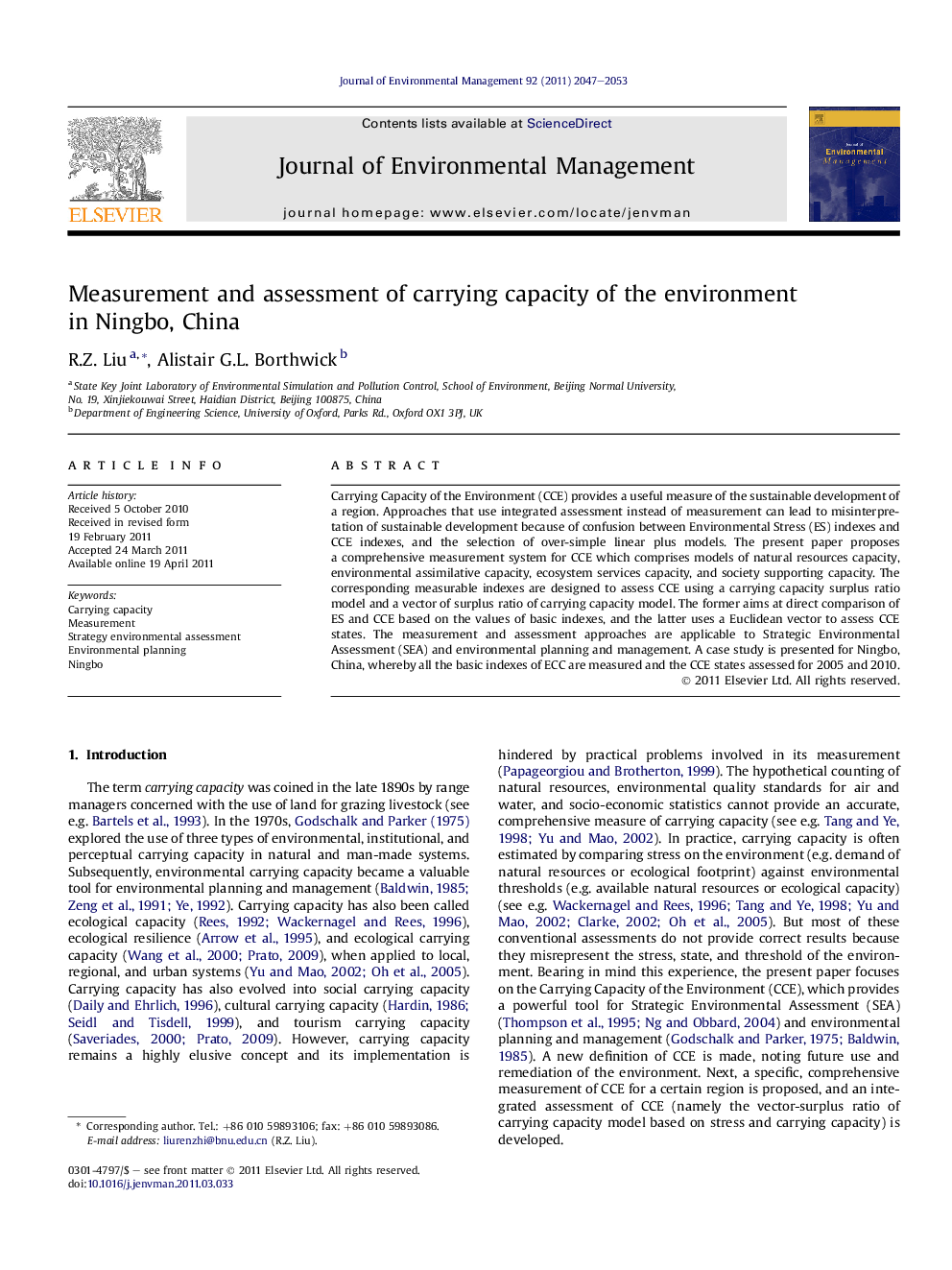| Article ID | Journal | Published Year | Pages | File Type |
|---|---|---|---|---|
| 1057325 | Journal of Environmental Management | 2011 | 7 Pages |
Carrying Capacity of the Environment (CCE) provides a useful measure of the sustainable development of a region. Approaches that use integrated assessment instead of measurement can lead to misinterpretation of sustainable development because of confusion between Environmental Stress (ES) indexes and CCE indexes, and the selection of over-simple linear plus models. The present paper proposes a comprehensive measurement system for CCE which comprises models of natural resources capacity, environmental assimilative capacity, ecosystem services capacity, and society supporting capacity. The corresponding measurable indexes are designed to assess CCE using a carrying capacity surplus ratio model and a vector of surplus ratio of carrying capacity model. The former aims at direct comparison of ES and CCE based on the values of basic indexes, and the latter uses a Euclidean vector to assess CCE states. The measurement and assessment approaches are applicable to Strategic Environmental Assessment (SEA) and environmental planning and management. A case study is presented for Ningbo, China, whereby all the basic indexes of ECC are measured and the CCE states assessed for 2005 and 2010.
